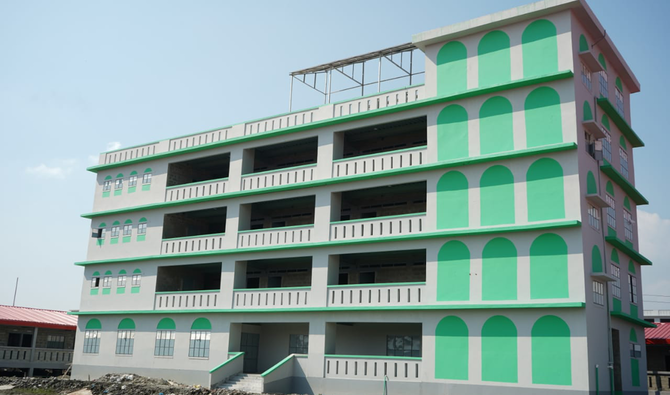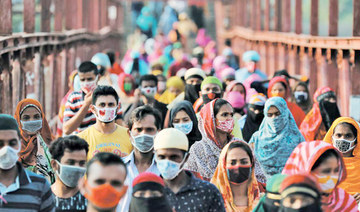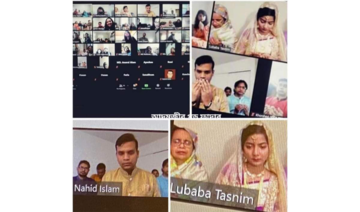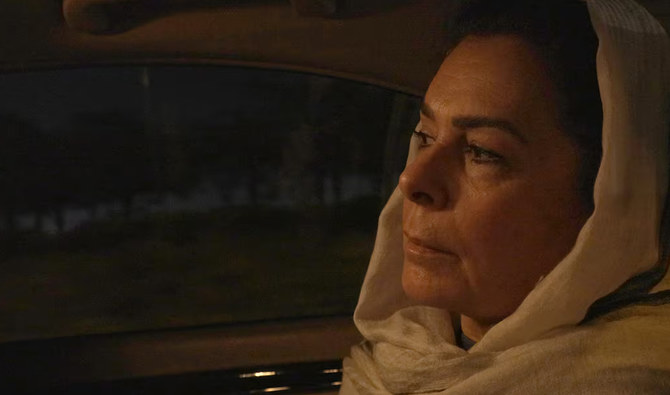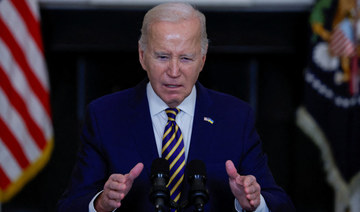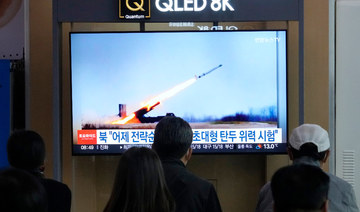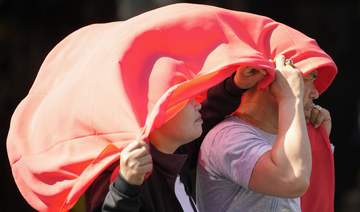DHAKA: Bangladesh has yet to decide on the relocation of more than 300 Rohingya refugees, including children, from Bhasan Char Island to the camps in Cox’s Bazar district, more than two months after they were quarantined there amid the nationwide coronavirus disease (COVID-19) lockdown, officials told Arab News on Sunday.
“As of today, there is no decision to relocate the Rohingya to the mainland refugee camps in Cox’s Bazar. The Rohingya are (being) taken care of by the Bangladesh Navy, and everything is going well over there,” Shah Rejoan Hayat, joint secretary of the Ministry of Disaster Management and Relief (MDMR), said.
The Rohingya were rescued by the Bangladesh Navy on May 2 and sent to Bhasan Char after being stranded at sea for weeks following Malaysia’s decision to deny them entry due to the COVID-19 outbreak.
However, the US-based Human Rights Watch (HRW) has urged Bangladesh to move the Rohingya from the “flood-prone island” in the Bay of Bengal, accusing officials of using the pandemic to “detain refugees” on Bhasan Char, which it says is extremely vulnerable to monsoon storms.
“Bangladesh authorities are using the pandemic as an excuse to detain refugees on a spit of land in the middle of a churning monsoon sea while their families anxiously pray for their return,” HRW said in a statement released on Thursday.
It added that the Bangladeshi government was “inexplicably delaying aid workers’ access to support the refugees with immediate care, and refusing to reunite them with their families in the Cox’s Bazar camps.”
According to HRW, the quarantined refugees “do not have access to food, clean drinking water or medical care,” while others have allegedly been “beaten up and mistreated by the authorities,” the statement said.
However, Bangladeshi authorities have rejected HRW’s claims, reasoning that the 308 refugees were sent to the island because authorities were afraid they might have contracted COVID-19.
“These Rohingya were denied access by Malaysia, Thailand and driven out from Myanmar. Bangladesh was kind enough to accept them on humanitarian grounds. So Bangladesh doesn’t deserve any criticism in this regard, it might be applicable for some other countries,” Mohammad Shamsuddoza, additional refugee relief and repatriation commissioner, told Arab News.
Hayat said HRW’s concerns were unfounded because Bhasan Char, an artificial island completed in 2006, had been constructed to be protective.
“The Bangladesh Navy has a forward base over there and enough protective measures to ensure the safety of inhabitants on the island,” Hayat, who is also the chief of the MDMR’s refugee wing, said.
He added that to safeguard Bhasan Char from tidal floods and natural disasters, the navy had built a 13 kilometer long and 3 x 37 meter dam on the island, which also has 120 cluster villages for nearly 100,000 refugees.
Each Bhasan Char house has concrete rooms measuring 2 x 2.5 meters, with small windows and a toilet, for 11 people. The current ratio in Cox’s Bazar camps stands at 1 house to 22 people, with around 1.5 million refugees living there.
Additional measures include 120 cyclone shelters that are constructed 4 feet above land, with a “full-fledged medical unit and enough food supplies” available for the refugees on the island, a source from the Bangladesh Navy’s headquarters told Arab News, requesting anonymity.
“The lives of the inhabitants on the island are completely safe during any tidal floods and cyclone. Around 200 of our members are stationed on the island including ten officers,” he added.
Meanwhile, the UN Refugee Agency (UNHCR) said it was waiting for the government’s approval for a visit to Bhasan Char to “assess the immediate humanitarian situation and specific needs” on the island.
“Terms of reference have been shared with the government, and we are continuing to await feedback. Several months have passed since the refugees were transferred to Bhasan Char, and it is now urgent for the UN to have access to them,” Louise Donovan, UNHCR spokesperson at Cox’s Bazar, told Arab News on Sunday.
Donovan added that the impending monsoon season could pose a higher risk.
“With the onset of monsoon and cyclone seasons, the UNHCR is concerned for the safety of all people living in low lying coastal areas of India and Bangladesh, including on islands such as Bhasan Char, as well as those Rohingya refugees who may remain on boats at sea,” Donovan added.
Bangladesh has spent around $300 million to make the island habitable for 100,000 Rohingya in a bid to decongest overcrowded camps in Cox’s Bazar, to accommodate refugees fleeing persecution. Most fled from Myanmar’s northern Rakhine State following a brutal military crackdown.
A plan to relocate the first batch of Rohingya was postponed last November after the UN raised questions about the safety measures and living conditions on the island.
Buddhist-majority Myanmar considers the Rohingya to be “Bengalis” from Bangladesh even though their families have lived in the country for generations. Nearly all of them have been denied citizenship for decades, and they are also denied freedom of movement and other basic rights.






